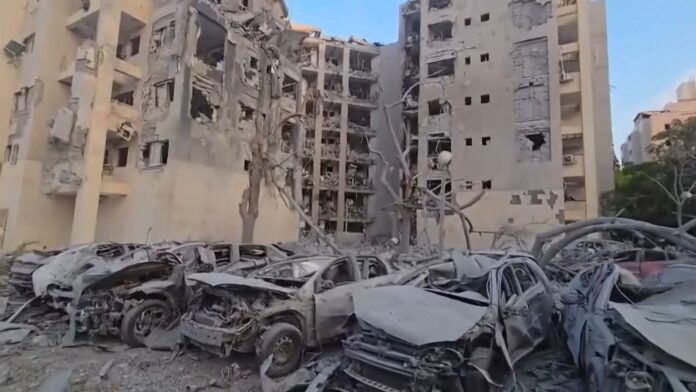The situation in the region was quite confusing on June 24, 2025, only a few hours after a shaky ceasefire between Iran and Israel was declared, as new missile activity raised serious doubts about whether the deal had already been tampered with. It was mediated with the assistance of the United States, after days of heavy military action between the two countries, which acknowledged American attacks on Iranian nuclear plants and Iranian counter-retaliatory attack using missiles on a U.S. station in Qatar.
Preliminary accounts produced by Israeli and American authorities indicated that Iran could have launched a last salvo of missiles against Israel as the ceasefire was about to come into effect. Although Iranian state media stated the launch occurred just before the official ceasefire launched on its doorstep, Israeli authorities have regarded it as a breach due to the fact that it was a clear measure to go on proving the limits of the settlement.
Iran’s Timing: Deliberate or Miscalculated?
Iran protests it had not violated the ceasefire, announcing via its government media that the June 24 rocket strikes had been pre-planned and occurred prior to the imposition of the truce. The leader of Iran, Ayatollah Ali Khamenei, justified the step, as the attack was also their right, and their reply to recent aggression, one of which was the U.S. bombing of nuclear sites in Fordow, Natanz, and Isfahan.
Nonetheless, Israeli authorities have also published radar data and satellite photographs indicating that at least a few of the missiles were fired a few minutes after the ceasefire officially started. Suppose it was the case, then that would represent a clear violation of the conditions spelled out in the U.S.-supported ceasefire framework.
Israel’s Response: Strategic Patience or Retaliation?
Israel has so far chosen not to retaliate immediately, despite claiming that Iran has already violated the ceasefire terms. In a brief public statement, the Israeli defense ministry warned that it reserves the right to respond “forcefully” if there are any additional provocations. Defense Minister Yoav Gallant stated, “We are watching very closely. If Tehran thinks this is over, they are mistaken.”
Behind closed doors, however, Israeli intelligence officials are reportedly divided. Some argue that responding now could collapse the ceasefire entirely, while others believe that failing to respond will embolden Iran to keep testing boundaries. U.S. President Donald Trump has urged restraint from both sides, calling on leaders to give diplomacy a chance.
U.S. Caught Between De-escalation and Deterrence
The United States finds itself in a difficult position. Having just conducted one of the most significant military strikes against Iran’s nuclear program in decades, Washington is also leading the push for calm in the region. President Trump downplayed Iran’s post-ceasefire missile activity, calling it “sloppy but not strategic” and reaffirmed that “peace is still possible.”
U.S. military forces in the region remain on high alert. Officials at Al-Udeid Air Base in Qatar have confirmed that no further Iranian missile threats have been detected since the launch early Tuesday morning. However, they remain concerned that proxy groups aligned with Iran could resume attacks even if Tehran does not.
Global Reaction and Diplomatic Tensions
World leaders have expressed cautious optimism about the ceasefire but are monitoring the situation closely. European Union foreign policy chief Josep Borrell said that the missile activity after the ceasefire announcement was “deeply troubling,” and called for an investigation into the timeline of the strikes. Meanwhile, the United Nations Security Council has scheduled an emergency session to assess whether Iran’s actions violate international agreements or constitute a technical breach of the ceasefire.
Regional players such as Saudi Arabia and Qatar have urged both nations to honor the ceasefire and avoid further destabilization. Qatar, in particular, has been active diplomatically after Iranian missiles targeted the U.S. base on its soil the previous day.








